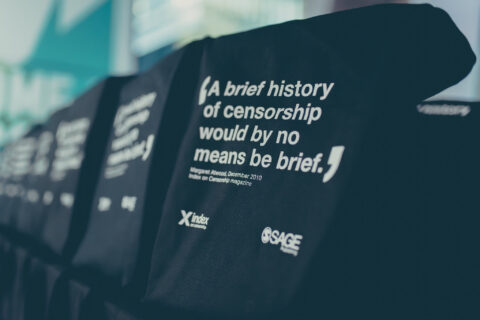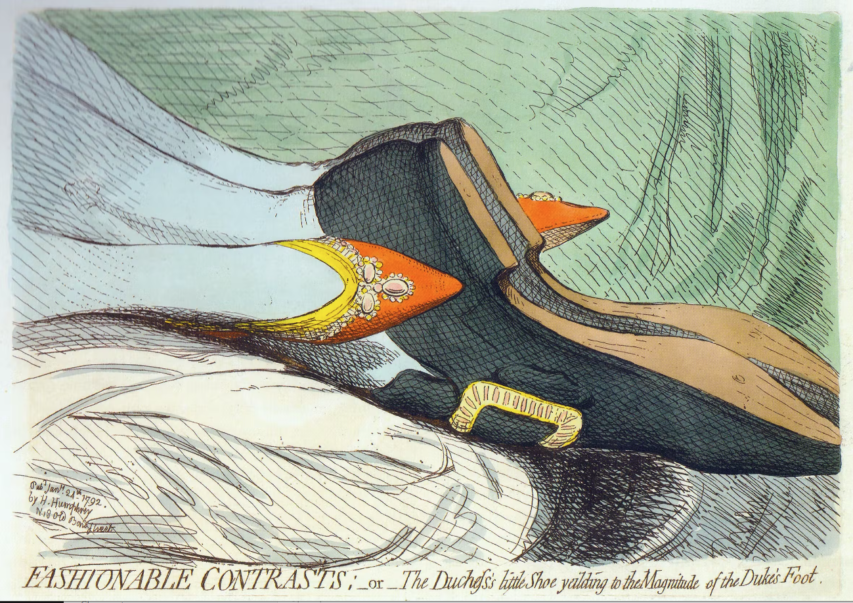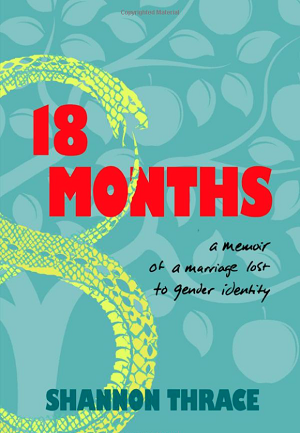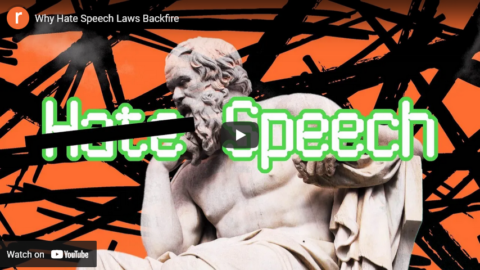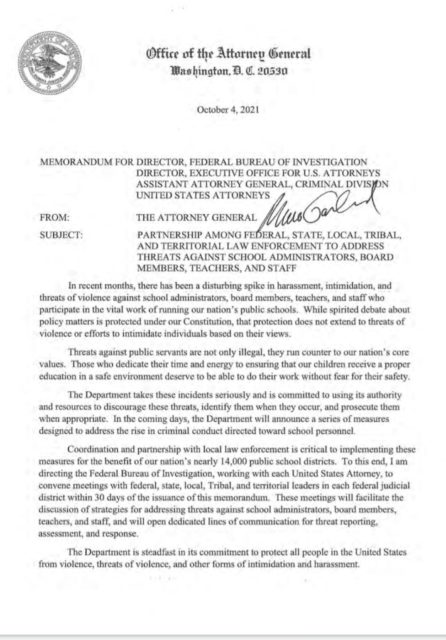History Hit
Published Dec 15, 2023They’re famously thought of as a buttoned up prudish bunch, but we all know they loved to bump uglies as much as anyone today.
Were the spanking punishments of boarding schools really the origins of brothels? Who were the pin-ups of Victorian women? And what did the saucy portrait Queen Victoria gave to Prince Albert look like?
Today we go Betwixt the Victorian Sheets with Dan Snow, from History Hit sister podcast Dan Snow’s History Hit, to find out all about Victorian relationships.
(more…)
April 24, 2024
What Were Victorian Attitudes Towards Sex?
December 15, 2023
January 6, 2023
November 30, 2022
James Gillray
In The Critic, James Stephens Curl reviews a new biography of the cartoonist and satirist James Gillray (1756-1815), who took great delight in skewering the political leaders of the day and pretty much any other target he fancied from before the French Revolution through the Napoleonic wars:
During the 1780s Gillray emerged as a caricaturist, despite the fact that this was regarded as a dangerous activity, rendering an artist more feared than esteemed, and frequently landing practitioners into trouble with the law. Gillray began to excel in invention, parody, satire, fantasy, burlesque, and even occasional forays into pornography. His targets were the great and good, not excepting royalty. But his vision is often dark, his wit frequently cruel and even shockingly bawdy: some of his own contemporaries found his work repellent. He went for politicians: the Whigs Charles James Fox (1749-1806), Edmund Burke (1729-97), and Richard Brinsley Butler Sheridan (1751-1816) on the one hand, and William Pitt (1759-1806) on the other. Fox was a devious demagogue (“Black Charlie” to Gillray); Burke a bespectacled Jesuit; and Sheridan a red-nosed sot. But Gillray reserved much of his venom for “Pitt the Bottomless”, “an excrescence … a fungus … a toadstool on a dunghill”, and frequently alluded to a lack of masculinity in the statesman, who preferred to company of young men to any intimacies with women, although the caricaturist’s attitude softened to some extent as the wars with the French went on.
As the son of a soldier who had been partly disabled fighting the French, Gillray’s depictions of the excesses of the Revolution were ferocious: one, A Representation of the horrid Barbarities practised upon the Nuns by the Fish-women, on breaking into the Nunneries in France (1792), was intended as a warning to “the FAIR SEX of GREAT BRITAIN” as to what might befall them if the nation succumbed to revolutionary blandishments. The drawing featured many roseate bottoms that had been energetically birched by the fishwives. He also found much to lampoon in his depictions of the Corsican upstart, Napoléon.
[…]
Some of Gillray’s works would pass most people by today, thanks to the much-trumpeted “world-class edication” which is nothing of the sort: one of my own favourites is his FASHIONABLE CONTRASTS;—or—The Duchefs’s little Shoe yeilding to the Magnitude of the Duke’s Foot (1792), which refers to the remarkably small hooves of Princess Frederica Charlotte Ulrica Catherina of Prussia (1767-1820), who married Frederick, Duke of York and Albany (1763-1827) in 1791: their supposed marital consummation is suggested by Gillray’s slightly indelicate rendering, in which the Duke’s very large footwear dwarfs the delicate slippers of the Duchess.
“In 1791 and 1792, there was no one who received more attention in the British press than Frederica Charlotte, the oldest daughter of the King of Prussia, whose marriage to the second (and favorite) son of King George and Queen Charlotte, Prince Frederick, the Duke of York set off a media frenzy that can only be compared to that of Princess Diana in our own day.”
Description from james-gillray.org/fashionable.htmlAll that said, this is a fine book, beautifully and pithily written, scholarly, well-observed, and superbly illustrated, much in colour. However, it is a very large tome (290 x 248 mm), and extremely heavy, so can only be read with comfort on a table or lectern. The captions give the bare minimum of information, and it would have been far better to have had extended descriptive captions under each illustration, rather than having to root about in the text, mellifluous though that undoubtedly is.
What is perhaps the most important aspect of the book is to reveal Gillray’s significance as a propagandist in time of war, for the images he produced concerning the excesses of what had occurred in France helped to stiffen national resolve to resist the revolutionaries and defeat them and their successor, Napoléon, whose own model for a new Europe was in itself profoundly revolutionary. What he would have made of the present gang of British politicians must remain agreeable speculation.
November 17, 2022
The Pornstars of World War Two – Pin-Ups – On the Homefront 017
World War Two
Published 16 Nov 2022How do you motivate men to leave home and go fight in a foreign land? Send them packing with Betty Grable, Rita Hayworth, and Irene Manning, of course! It helps if you include an Esquire magazine and girlie cartoons from the infamous Alberto Vargas.
(more…)
October 19, 2022
June 19, 2022
Why Hate Speech Laws Backfire
ReasonTV
Published 26 Feb 2022Here’s a brutal irony about regulating hate speech: Such laws often end up hurting the very people they are supposed to protect.
——————
Follow us on Twitter: https://twitter.com/reasonReason is the planet’s leading source of news, politics, and culture from a libertarian perspective. Go to reason.com for a point of view you won’t get from legacy media and old left-right opinion magazines.
—————-
That’s one of the central lessons in Jacob Mchangama’s important new book, Free Speech: A History from Socrates to Social Media. Mchangama heads up the Danish think tank Justitia. He’s worried about a proposal that would make hate speech a crime under European Union (EU) law and give bureaucrats in Brussels sweeping powers to prosecute people spewing venom at religious and ethnic minorities, members of the LGBT+ community, women, and others.Europe’s history with such laws argues against them. In the 1920s, Germany’s Weimar Republic strictly regulated the press and invoked emergency powers to crack down on Nazi speech. It censored and prosecuted the editor of the anti-Semitic Nazi paper Der Stürmer, Julius Streicher, who used his trial as a platform for spreading his views and his imprisonment as a way of turning himself into a martyr and his cause into a crusade. When the Nazis took power in the early ’30s, Mchangama stresses, they expanded existing laws and precedents to shut down dissent and freedom of assembly.
Contemporary scholarship suggests that there can be a “backlash effect” when governments shut down speech, leading otherwise moderate people to embrace fringe beliefs. Mchangama points to a 2017 study published in the European Journal of Political Research that concluded extremism in Western Europe was fueled in part by “extensive public repression of radical right actors and opinions.”
In 1965, the United Kingdom passed a law banning “incitement to racial hatred,” but one of the very first people prosecuted under it was a black Briton who called whites “vicious and nasty people” in a speech. More recently, Mchangama notes that radical feminists in England “have been charged with offending LGBT+ people because they insist there are biological differences between the sexes. In France, ‘an LGBT+ rights organization was fined for calling an opponent of same-sex marriage a ‘homophobe.'”
“Once the principle of free speech is abandoned,” warns Mchangama, “any minority can end up being targeted rather than protected by laws against hatred and offense.”
That’s what happened in Canada in the 1990s after the Supreme Court there ruled that words and images that “degrade” women should be banned. The decision was based in part on the legal theories of feminist author Andrea Dworkin, whose books on why pornography should be banned were briefly seized by Canadian customs agents under the laws she helped to inspire.
First Amendment rights are still popular in the United States, with 91 percent of us in a recent survey agreeing that “protecting free speech is an important part of American democracy.” But 60 percent of us also said that the government should prohibit people from sharing a racist or bigoted idea.
Hearing hateful words and ideas outrages and discomforts most of us, but Mchangama’s history of free speech underscores that state suppression can grant those words and ideas more power and influence. And that the best antidote to hate in a free and open society is not to hide from it but to openly—and persuasively—confront it.
Listen to my Reason Interview podcast with Jacob Mchangama at https://reason.com/podcast/2022/02/16….
Written by Nick Gillespie. Edited by Regan Taylor.
October 10, 2021
“The NSBA letter is a blood libel against America’s dissenting parents”
In this Substack essay, C. Bradley Thompson calls the National School Boards Association’s (NSBA) demand that the federal government treat dissenting parents as “domestic terrorists” a declaration of war against ordinary American citizens:
On September 30, the National School Boards Association (NSBA) sent a letter to the Biden administration denouncing the nationwide parental protests taking place at school board meetings against Critical Race Theory, Critical Gender Theory, pornography in the classroom, mask mandates, vaccine requirements, and remote learning. It turns out that parents all over the country are upset about the indoctrination and censorship in America’s government schools. An army of moms (and dads) have been asserting their parental responsibilities and their constitutional rights by showing up to school board meetings and voicing — sometimes angrily — their contempt and disgust for those school boards and teachers promoting and sanctioning ideas and ideologies opposed by the parents.
The NSBA letter (see here) begins rather ominously by declaring that “America’s public schools and its education leaders are under an immediate threat” and that “immediate assistance” is therefore “required to protect our students, school board members, and educators who are susceptible to acts of violence affecting interstate commerce because of threats to their districts, families, and personal safety.” The NSBA is essentially declaring a “State of Emergency” for America’s government school system. Let that sink in for a moment.
[…]
Let’s be clear about what the NSBA letter means in practice: first, it is dog-whistling a message which says that protesting parents are engaged in “domestic terrorism and hate crimes” (including, presumably, against their own children); and, second, it is requesting that the Biden administration use the full coercive power of the United States government — power that it has only previously been used against Islamic terrorists and foreign enemies of the United States — to monitor, investigate, arrest, interrogate, prosecute, convict and jail upset parents who are protesting AGAINST the teaching of systemic racism (i.e., CRT), pornography in the classroom, and the unscientific mask mandates for children.
The NSBA letter is saying, in effect, that complaining parents are the moral equivalent of jihadi terrorists, who are out to commit acts of violence and terror against America’s school board members, its teachers, and, yes, even the children. As such, these parents should be treated as a national security threat, and they must be dealt with by all means necessary.
The NSBA letter is a blood libel against America’s dissenting parents. In a decent, free, and just society such a letter would be condemned and dismissed out of hand, but that is not the kind of society in which we live today.
Rather than tossing the NSBA letter in the trash where it belongs, the Attorney General of the United States, Merrick Garland, read it and immediately ordered the FBI and America’s National Security State to mobilize its immense power against parents whose only real crime is to take seriously the education of their children. He did this within just a few days of receiving the NSBA letter.
I encourage you to read — and to read slowly — Garland’s official memorandum sent to the Director of the FBI and to various other law enforcement agencies, offices, and divisions.
Garland’s letter is a moral, political, and constitutional abomination. To say there are serious problems with the Attorney General’s Orwellian letter would be an understatement. The letter asserts, for instance, that “there has been a disturbing spike in harassment, intimidation, and threats of violence against school administrators, board members, teachers, and staff.” It claims as fact a “rise in criminal conduct directed toward school personnel”. Neither the NSBA nor the Justice Department have provided any credible or meaningful evidence to support this unfounded claim, nor does Garland’s passive-aggressive letter specify what it classifies as “criminal conduct” or “domestic terrorism”. (Not surprisingly, Garland’s letter neglects to mention that some school board members and the teachers’ unions have been harassing and threatening parents for months. See here, here, here, here, and here.) The simple fact of the matter is that virtually no violence has occurred at school board meetings this year.
In support of the NSBA request, Garland’s memorandum announced that he has directed the FBI and each U. S. Attorney to convene meetings immediately with “federal, state, local, Tribal, and territorial leaders in each federal judicial district” in order to “facilitate the discussion of strategies” for dealing with threats against school officials. The Department of Justice will also “open dedicated lines of communication for threat reporting, assessment, and response”. In other words, the government will establish “snitch” lines against parents. If a school board member doesn’t like what they hear in a public meeting, they will be able to report (presumably anonymously) threats of harassment and intimidation.
May 30, 2021
QotD: Pornography
The more important effect of home video — and, even more so, of the Internet — has been to create a wide and wild array of market segments, a diversity so dizzying it defies the very idea of a mainstream. A couple decades ago, feminists could argue plausibly that porn was partly responsible for the unrealistic body images they blame for bulimia and anorexia. Today, every conceivable body type has an online community of masturbators devoted to it.
Jesse Walker, “Guess Who’s Coming: Progress at the cineplex”, Reason, 2005-03-28.
June 29, 2020
Today on NeoNaziHuntingExpeditions, we track down Neo Nazi Bronies
In Quillette, Daniel Friedman examines the claims made in a recent Atlantic investigation into Nazis in the My Little Pony community (that is, adult fans of the show, not little girls … I think):

Image found by searching for “Neo Nazi Bronies”, listed URL – http://www.democraticunderground.com/1014960111
The evidence of this Nazi problem in the My Little Pony fandom is that, on a My Little Pony imageboard called Derpibooru, over 900 images were tagged as “racist,” and images mocking Black Lives Matter were upvoted by users while images supporting the movement were downvoted, even as the site’s administrators made a statement of support for the protests. After much controversy, the imageboard banned uploading images “created for no reason other than to incite controversy” and removed the 926 images tagged “racism” or “racist.” This move was extremely controversial within the Derpibooru community, many members of which oppose any moderation.
Atlantic reporter Kaitlyn Tiffany suggests that the strong free-speech norms of the Derpibooru boards stem from its origins on 4Chan, which Tiffany describes as “the largest den of chaos and toxic beliefs available on the Internet.” She describes the Brony community as being divided between those who “genuinely enjoy My Little Pony and the wholesome escapism it provides” and trolls who think it is “edgy and provocative to be an adult obsessed with cartoon ponies.” This frames the Derpibooru imageboard as a place where innocent cartoon fans are unknowingly subjected to subversive, racist memes and images that may send people down a rabbit hole of far-right content.
However, claims that a significant portion of the Brony community are Nazis, or that a significant amount of the content on Brony imageboards is right-wing propaganda or racist memes has to be put in the proper context. First of all, the 926 images tagged “racist” exist on a board that hosts over two million images. If you order all the site’s various tags by how many images fall within their categories, there are 12 full pages of other, more popular tags you have to scroll through to find the “racism” tag. One thousand two hundred and seventy-five images are tagged “politics” and include images both supporting and opposing Black Lives Matter. Discussion of these issues is a tiny fraction of one percent of the content on the My Little Pony imageboard.
By contrast, 315,867 images on the Derpibooru forum are tagged as sexually explicit, a further 127,414 images are tagged as sexually suggestive and 105,521 images are tagged as containing “questionable” sexual content. The truth is that Derpibooru’s lax moderation norms and anti-censorship culture don’t exist to protect objectionable political content; this imageboard is unmoderated because it is an enormous repository of fan-made My Little Pony pornography.
The Atlantic article fails to place the 926 racist images in the context of the larger scope of the two million images hosted by the Derpibooru board, because less than one-quarter of one percent of the site’s content is of a political nature. And the Atlantic article avoids mentioning the half-million pornographic images the site hosts, because doing so reveals that the community’s widespread opposition to content moderation on their imageboard is about protecting sexually explicit content rather than creating a space for hateful politics to flourish, and it further reveals that the Bronies are 500 times more interested in having sex with My Little Pony characters than they are in spreading racist pony memes.
The article creates an impression that the alt-Right is using seemingly-innocent cartoon fandoms as a Trojan horse to conceal and spread a sinister ideology, but the truth is that the only thing these guys are interested in hiding inside a horse is their dicks.
February 23, 2020
December 13, 2017
Coming way too soon
Charles Stross is a highly dependable source of nightmare fuel in his SF/horror writings. He’s just as disturbing when he points out real developments about to go mainstream:
AI assisted porn video is, it seems, now a thing. For those of you who don’t read the links: you can train off-the-shelf neural networks to recognize faces (or other bits of people and objects) in video clips. You can then use the trained network to edit them, replacing one person in a video with a synthetic version of someone else. In this case, Rule 34 applies: it’s being used to take porn videos and replace the actors with film stars. The software runs on a high-end GPU and takes quite a while — hours to days — to do its stuff, but it’s out there and it’ll probably be available to rent as a cloud service running on obsolescent bitcoin-mining GPU racks in China by the end of next week.
(Obvious first-generation application: workplace/social media sexual harassers just got a whole new toolkit.)
But it’s going to get a whole lot worse.
What I’m not seeing yet is the obvious application of this sort of deep learning to speech synthesis. It’s all very well to fake up a video of David Cameron fucking a goat, but without the bleating and mindless quackspeak it’s pretty obvious that it’s a fake. Being able to train a network to recognize the cadences of our target’s intonation, though, and then to modulate a different speaker’s words so they come out sounding right takes it into a whole new level of plausibility for human viewers, because we give credence to sensory inputs based on how consistent they are with our other senses. We need AI to get the lip-sync right, in other words, before today’s simplistic AI-generated video porn turns really toxic.
(Second generation application: Hitler sums it up, now with fewer subtitles)
There are innocuous uses, of course. It’s a truism of the TV business that the camera adds ten kilograms. And we all know about airbrushing/photoshopping of models on magazine covers and in adverts. We can now automate the video-photoshopping of subjects so that, for example, folks like me don’t look as unattractive in a talking-heads TV interview. Pretty soon everyone you see on film or TV is going to be ‘shopped to look sexier, fitter, and skinnier than is actually natural. It’ll probably be built into your smartphone’s camera processor in a few years, first a “make me look fit in selfies” mode and then a “do the same thing, only in video chat” option.
October 4, 2017
Camille Paglia on the cultural influence of Hugh Hefner and Playboy
In the Hollywood Reporter, Jeanie Pyun talks to Camille Paglia about the late Hugh Hefner and his once-mighty Playboy empire:
Have you ever been to a party at the Playboy Mansion?
No, I’m not a partygoer! (Laughs.)
So let me just ask: Was Hugh Hefner a misogynist?
Absolutely not! The central theme of my wing of pro-sex feminism is that all celebrations of the sexual human body are positive. Second-wave feminism went off the rails when it was totally unable to deal with erotic imagery, which has been a central feature of the entire history of Western art ever since Greek nudes.
So let’s dig in a little — what would you say was Playboy‘s cultural impact?
Hugh Hefner absolutely revolutionized the persona of the American male. In the post-World War II era, men’s magazines were about hunting and fishing or the military, or they were like Esquire, erotic magazines with a kind of European flair.
Hefner reimagined the American male as a connoisseur in the continental manner, a man who enjoyed all the fine pleasures of life, including sex. Hefner brilliantly put sex into a continuum of appreciative response to jazz, to art, to ideas, to fine food. This was something brand new. Enjoying fine cuisine had always been considered unmanly in America. Hefner updated and revitalized the image of the British gentleman, a man of leisure who is deft at conversation — in which American men have never distinguished themselves — and the art of seduction, which was a sport refined by the French.
Hefner’s new vision of American masculinity was part of his desperate revision of his own Puritan heritage. On his father’s side, he descended directly from William Bradford, who came over on the Mayflower and was governor of Plymouth Colony, the major settlement of New England Puritans.
But Hefner’s worldview was already dated by the explosion of the psychedelic 1960s. The anything-goes, free-love atmosphere — illustrated by all that hedonistic rolling around in the mud at Woodstock in 1969 — made the suave Hefner style seem old-fashioned and buttoned up. Nevertheless, I have always taken the position that the men’s magazines — from the glossiest and most sophisticated to the rawest and raunchiest — represent the brute reality of sexuality. Pornography is not a distortion. It is not a sexist twisting of the facts of life but a kind of peephole into the roiling, primitive animal energies that are at the heart of sexual attraction and desire.
What could today’s media learn from what Hef did at Playboy?
It must be remembered that Hefner was a gifted editor who knew how to produce a magazine that had great visual style and that was a riveting combination of pictorial with print design. Everything about Playboy as a visual object, whether you liked the magazine or not, was lively and often ravishing.
H/T to Kathy Shaidle for the link.
March 23, 2017
Words & Numbers: We’re Becoming a Nation of Pets
Published on 22 Mar 2017
This week, Antony & James take on the idea of “victimless crimes” and discuss the odd and growing trend of governments regulating some private activities such as pornography, while others like smoking marijuana are increasingly allowed. People imposing their values on others seems to boil down to an inability to appreciate that others have different preferences, but it all results in Americans losing freedom and instead becoming a nation of pets.
Learn more here:
https://fee.org/articles/were-becoming-a-nation-of-pets/
http://www.antolin-davies.com/research/trib0217.pdf
http://www.antolin-davies.com/research/philly0317.pdf
January 31, 2017
“It’s been slowly feeling like the death of San Francisco”
The end of an era in San Francisco:
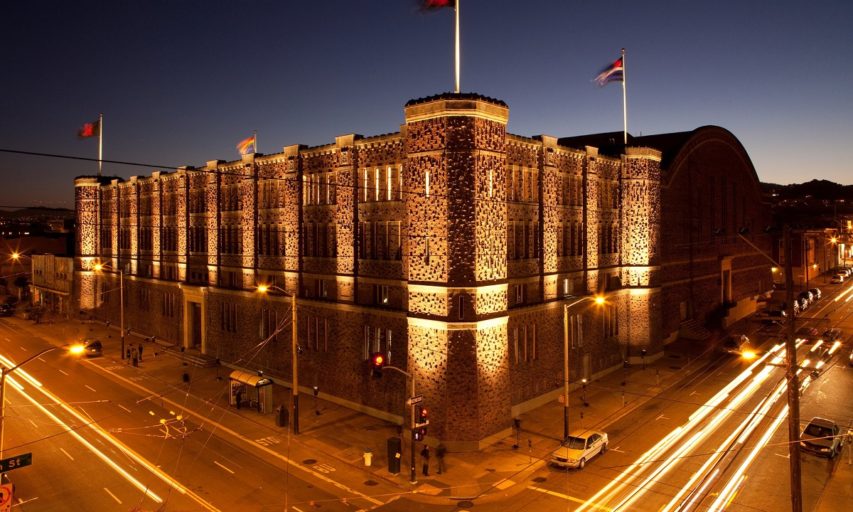
San Francisco Armory which, at its height, was making as many as 100 films a month. Photograph: Courtesy of San Francisco Armory
A handful of leather straps, sex toys and other bondage equipment were scattered throughout the mostly empty studios of Kink.com on a recent Thursday. Peter Acworth, founder and CEO of the BDSM porn empire, walked through the dark basement corridors of the San Francisco Armory, recounting how his company used to make as many as 100 films a month.
But in February, Kink actors will do their final shoot at the historic castle-like building that has become a world-famous destination for tourists and porn connoisseurs. As Acworth described Kink’s early days, staff upstairs prepared for a lavish party for Airbnb – the kind of corporate tech event that some fear could take over the Armory once porn is out the door.
“It’s heartbreaking,” said Lorelei Lee, a longtime Kink performer. “To lose this in a city that is losing resources for artists and queers and sex workers in such a huge way is sad.”
The Kink.com studio is the latest uniquely San Francisco institution to shutter in the rapidly gentrifying city, which in recent years has become exceedingly unaffordable and culturally homogeneous amid a huge technology boom. Combined with the financial turmoil in the porn industry, Kink’s business model has become unsustainable, leading Acworth to cease all production in the Armory.
Although Kink.com will maintain Armory offices and continue to provide content, some San Francisco performers are lamenting the closure of a porn studio that elevated the profile of fetish entertainment and BDSM and provided stable jobs and a safe workplace for LGBT people and sex workers.
Acworth, who is from the UK, launched the company in 1997 out of a grad school dorm room. In 2006, he purchased the 200,000 sq ft Armory, which is a 1914 reproduction of a medieval castle.
The national landmark became the headquarters for his growing network of BDSM and fetish subscriptions sites, including an interactive live page and a news site, and has housed public tours, shows, workshops and other porn events.

